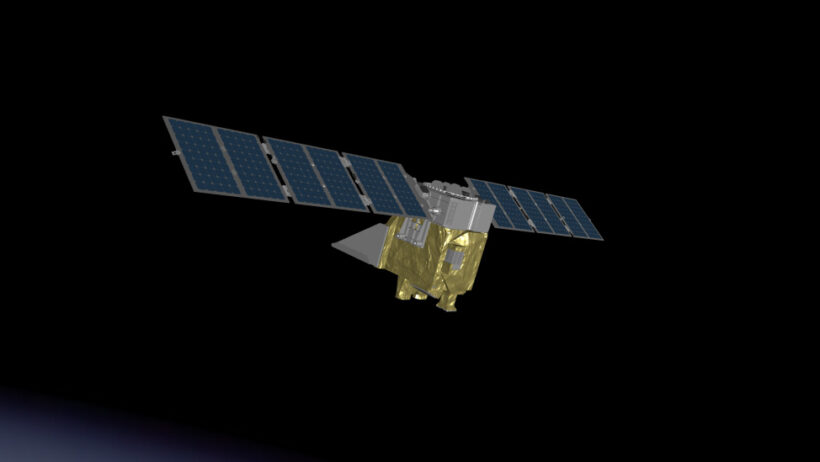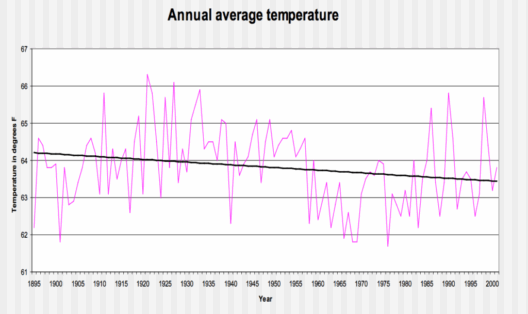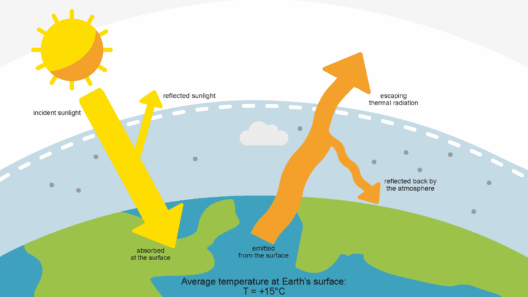In the labyrinthine mosaics of our planet’s atmosphere, methane lurks, a clandestine agent of climate change, insidiously influencing global temperatures and ecosystems. Often overshadowed by carbon dioxide, methane embodies the silent menace of greenhouse gases, delivering a potency that is staggering—over 25 times more effective at trapping heat than carbon dioxide over a century. As we navigate the complex interrelations of our biosphere, understanding this potent gas becomes paramount.
Methane, chemically known as CH4, is a simple molecule comprised of one carbon atom and four hydrogen atoms, yet its impact is anything but simple. It is generated through various natural and anthropogenic processes, emanating from sources such as wetlands, landfills, and livestock digestion. These sources, while essential for biodiversity and food chains, also thrust methane into the atmospheric spotlight as a significant contributor to global warming.
The phenomenon of methane’s potency can be likened to a raging wildfire that erupts with ferocity and consumes everything in its path, igniting temperatures far beyond those generated by its less potent cousin, carbon dioxide. Methane’s initial stability in the atmosphere belies its true nature. Though it dissipates faster than CO2, the first two decades after its release see it exert unparalleled influence, acting as a veritable amplifier of climate change, heating the planet relentlessly. The urgency to mitigate its emissions is palpable, as every moment spent in inaction compounds the climatological consequences.
One of the most pronounced avenues through which methane enters the atmosphere is agriculture. Livestock farming, especially in the production of ruminant animals like cows and sheep, releases methane during digestion through a process known as enteric fermentation. A single cow can produce approximately 100 to 200 liters of methane daily. This staggering statistic reflects the larger issue within the agricultural sector: as the global population increases, so does the demand for meat and dairy products, perpetuating the cycle of methane emissions.
Landfills present another critical battleground in the fight against methane emissions. As organic waste decomposes anaerobically—a process devoid of oxygen—methane is generated as a byproduct. In fact, landfills are responsible for about 14% of global anthropogenic methane emissions. The irony lies in the fact that waste management practices aimed at reducing landfill inputs often overlook the potent gas that escapes from these sites. To confront this challenge, enhanced waste management methods such as composting and anaerobic digestion must be prioritized. These techniques can not only reduce methane emissions but also generate renewable energy and produce valuable soil amendments.
Natural wetlands, too, play an enigmatic role in the methane dynamic. These ecosystems, often termed as ‘carbon sinks,’ can double as significant sources of methane emissions, particularly in a warming climate. Warmer temperatures accelerate organic matter decomposition, augmenting methane production. Hence, while protecting wetlands is crucial for biodiversity, a delicate balance must be maintained to mitigate their contribution to atmospheric methane levels.
The oil and gas industry emerges as yet another key player in the methane saga. Methane is the primary component of natural gas, and during extraction, processing, and distribution, significant amounts escape into the atmosphere. Fugitive emissions from aging infrastructure and leaks contribute substantially to the methane problem. Innovative technologies that can detect and repair these leaks are increasingly vital. Without immediate rectification of these infrastructure issues, carbon capture and storage solutions, while essential, won’t be sufficient to stem the tide of emissions.
Rising to this challenge demands a multifaceted approach. Policy frameworks aimed at reducing methane emissions must be forged and implemented with a sense of urgency. Examples include setting stringent regulations on emissions from landfills and the oil and gas sector, promoting sustainable agricultural practices, and incentivizing methane capture technologies. Nations must unite in this global effort, sharing knowledge and resources to combat a menace that does not respect borders.
Additionally, scientific innovation plays a crucial role in understanding and mitigating methane emissions. The emergence of satellite technologies, such as MethaneSAT, heralds a new era of monitoring. By utilizing high-resolution imagery, these satellites can identify methane hotspots, providing invaluable data to policymakers and researchers alike. Such technologies enable not only the quantification of emissions but also facilitate targeted efforts to reduce them.
Public awareness and grassroots movements are equally vital. Climate education must extend beyond academia; communities deserve access to information about methane’s impacts and the ways they can help. Engaging citizens via initiatives such as community composting can transform behavior and catalyze change from the ground up. When individuals recognize their role in the broader ecological context, the collective action can lead to substantial methane reduction.
Addressing methane emissions represents both a formidable challenge and a monumental opportunity. By embracing innovative solutions, forging robust policies, and fostering public engagement, society can dismantle methane’s dominion over our climate. Every step taken today impacts future generations, ensuring that our planet remains a hospitable home. Confronting methane with diligence and determination paves the way for a sustainable future—one where the specter of climate change looms less ominously, and where stewardship of our environment takes precedence. In this endeavor, vigilance, collaboration, and innovation are our guiding beacons.





